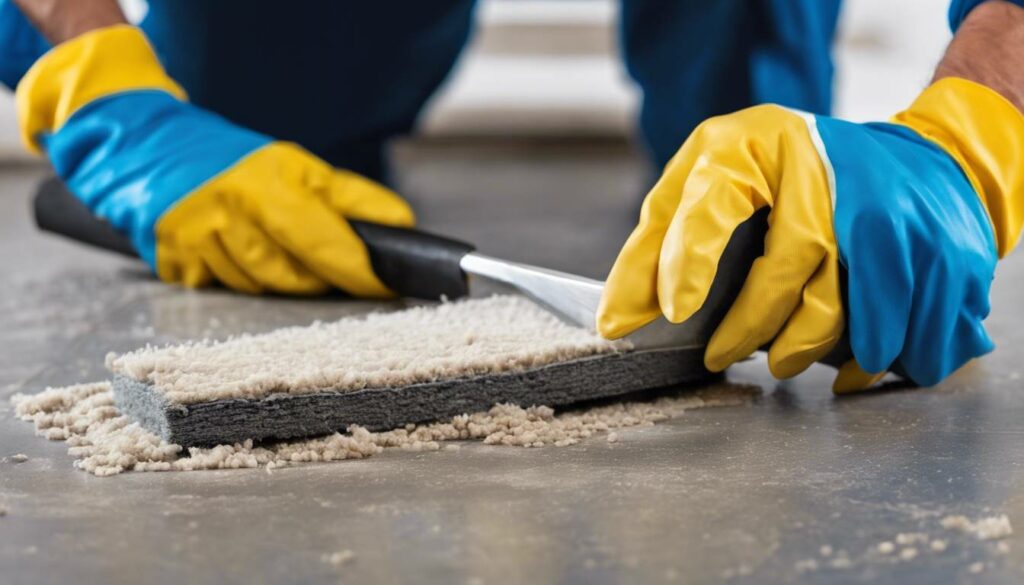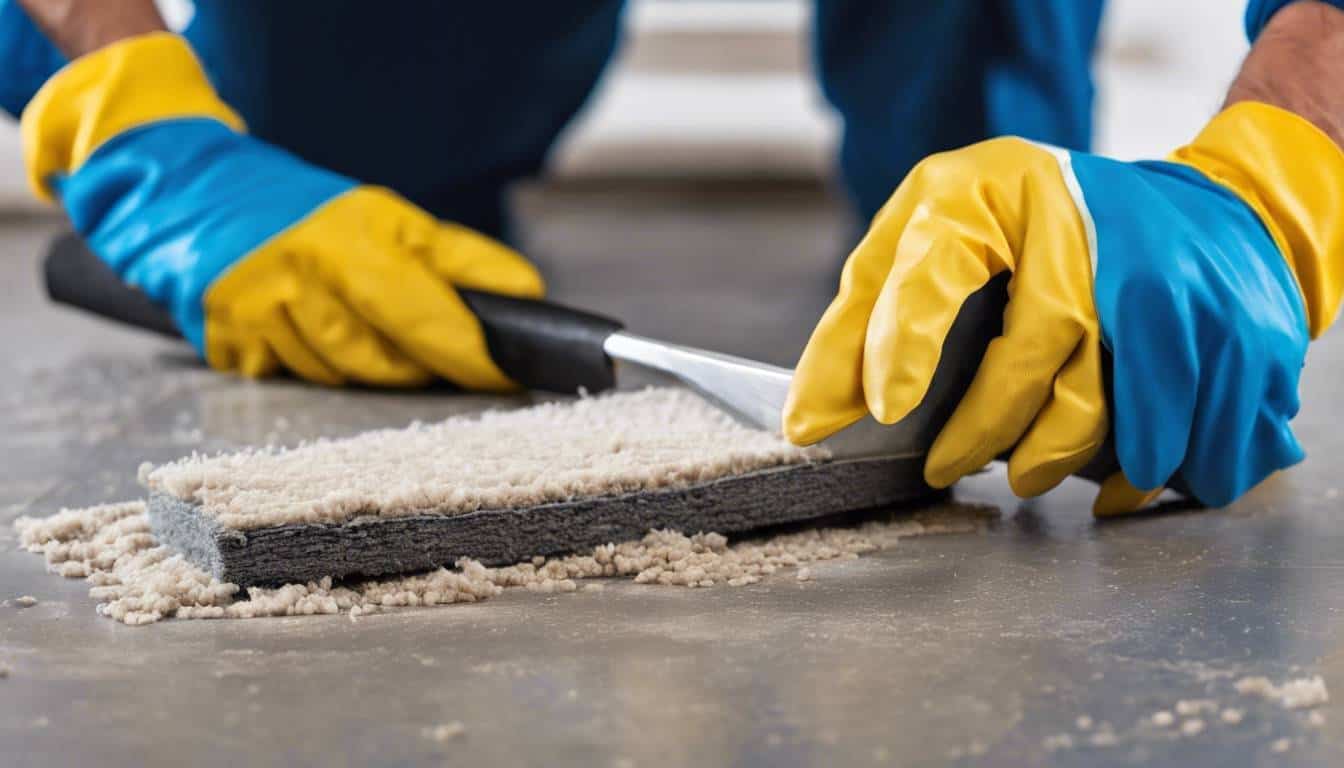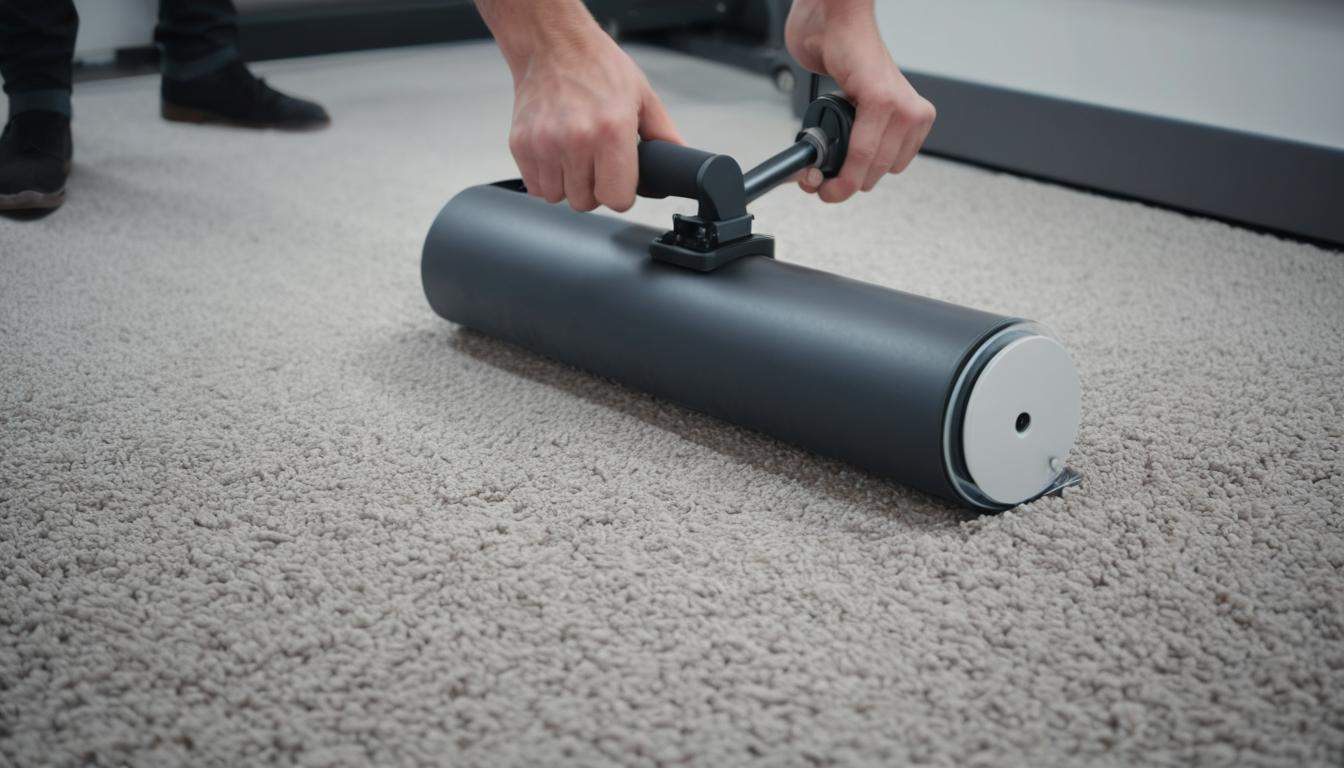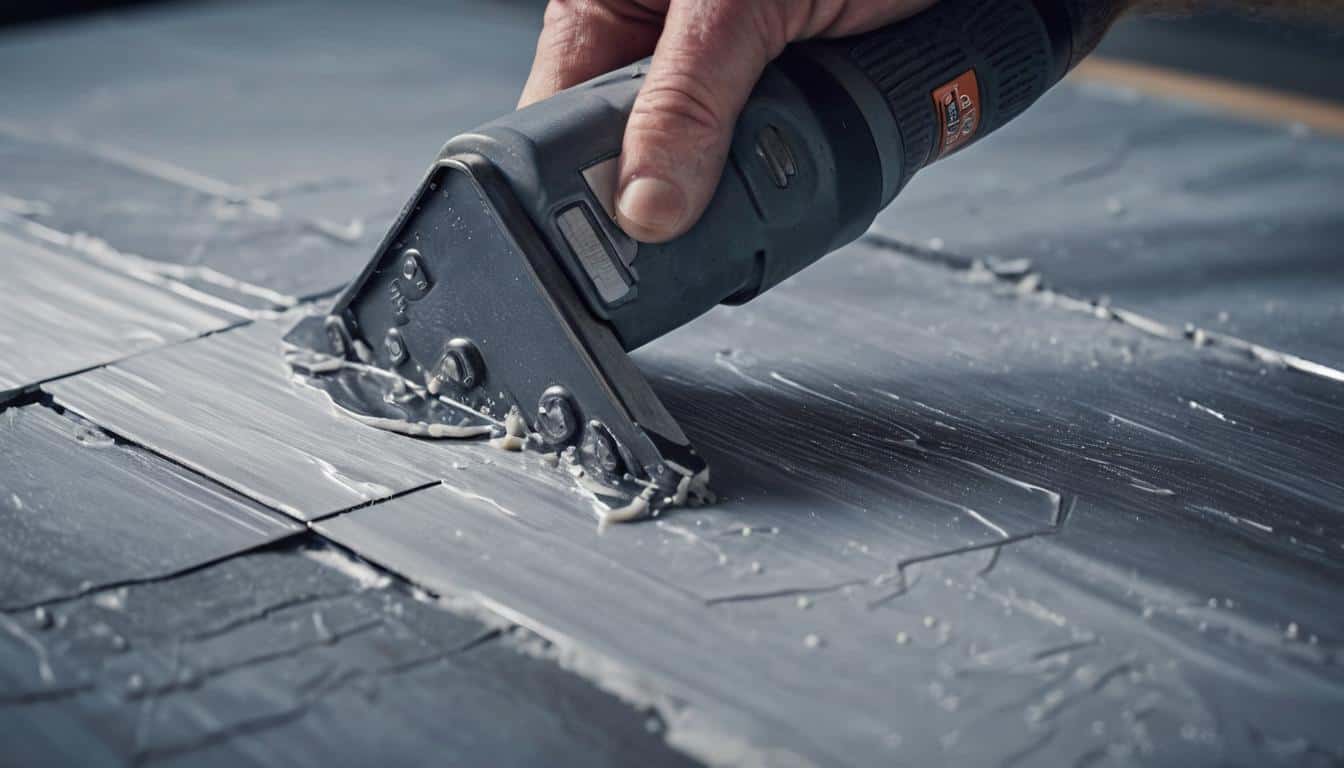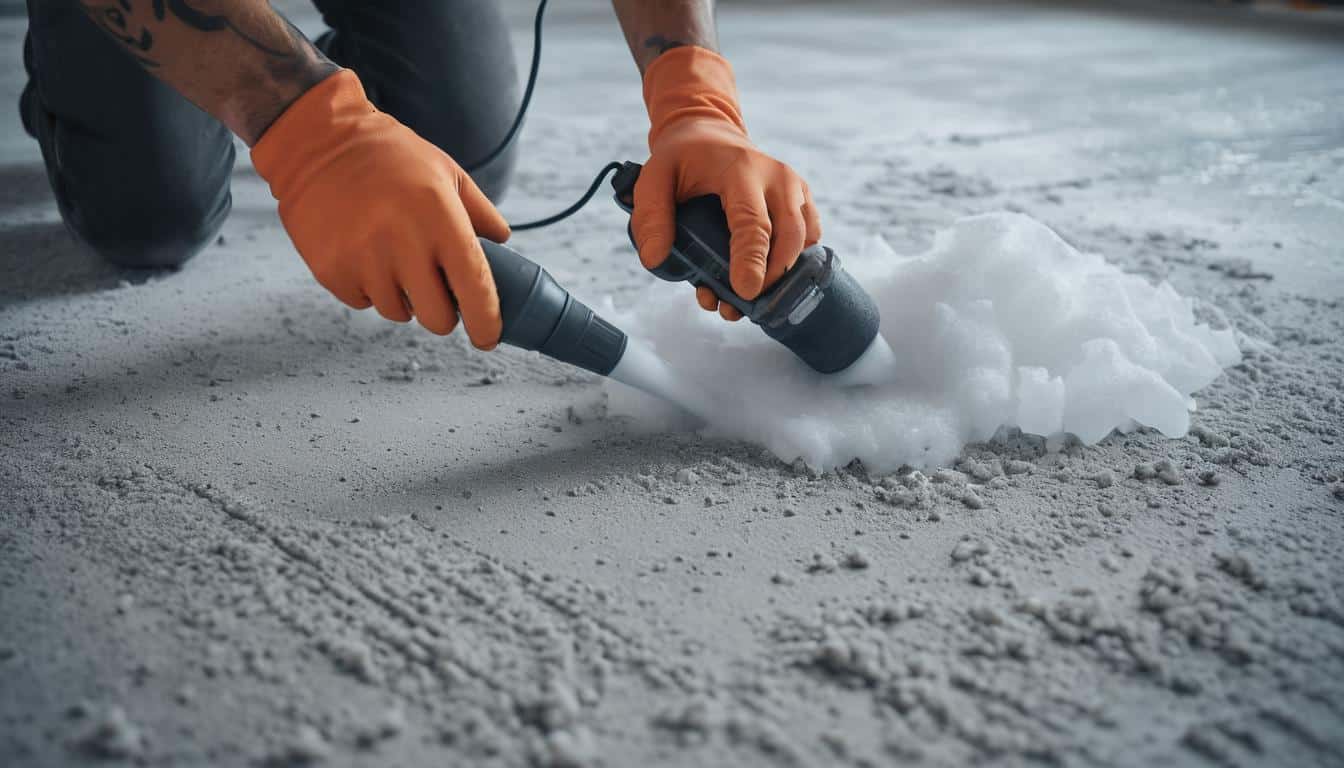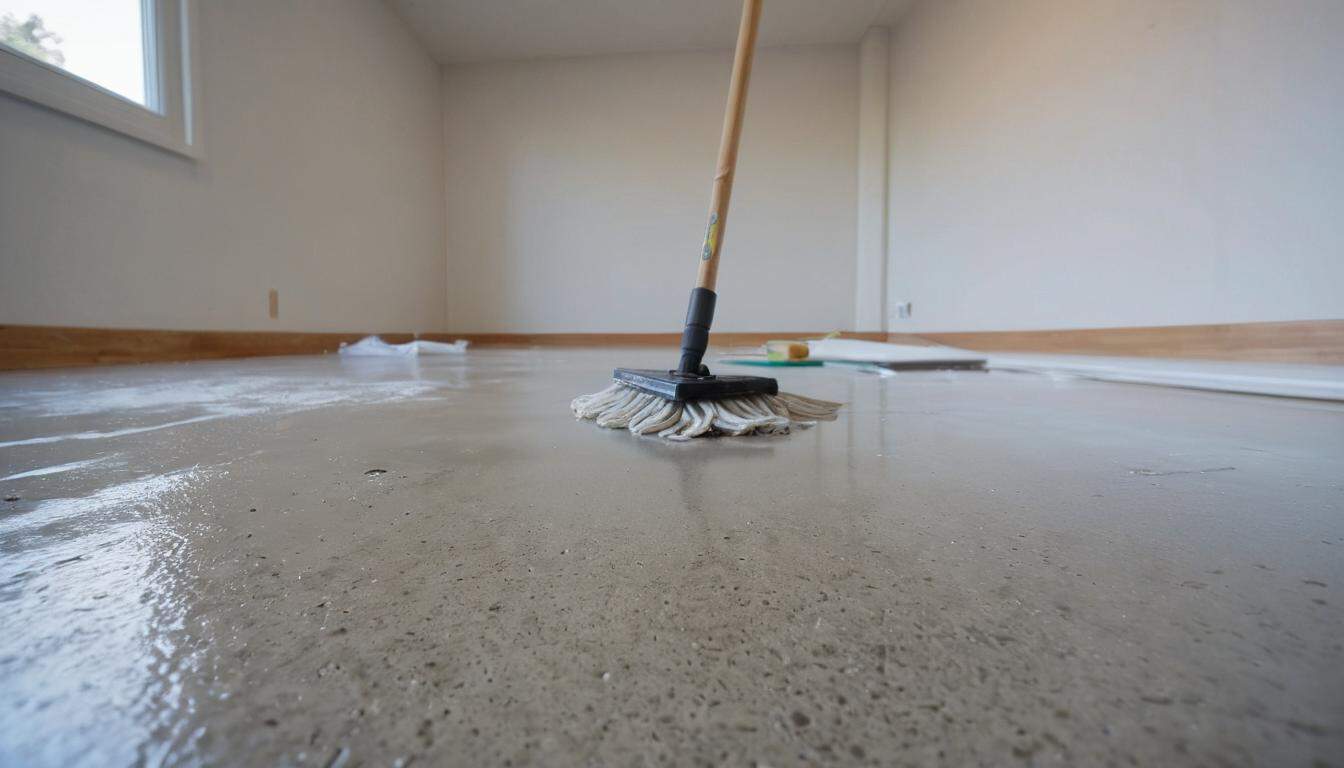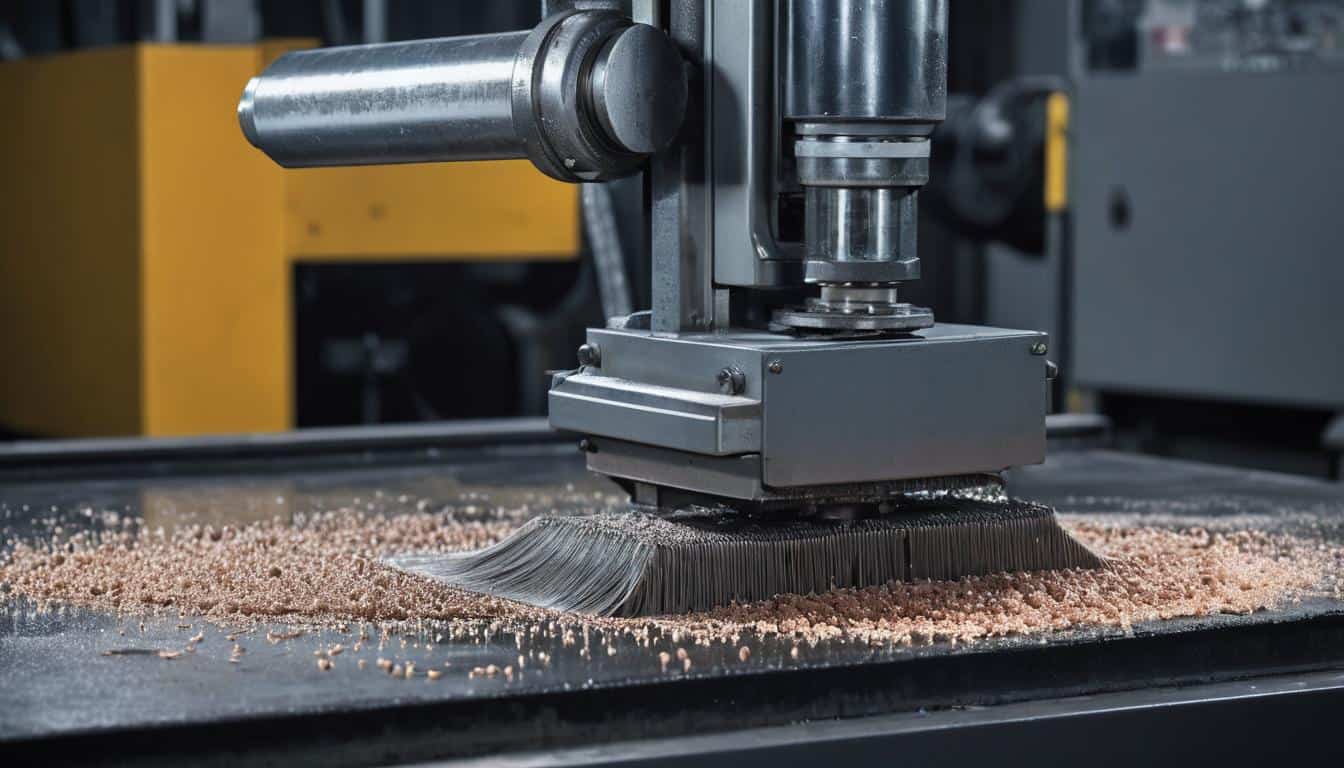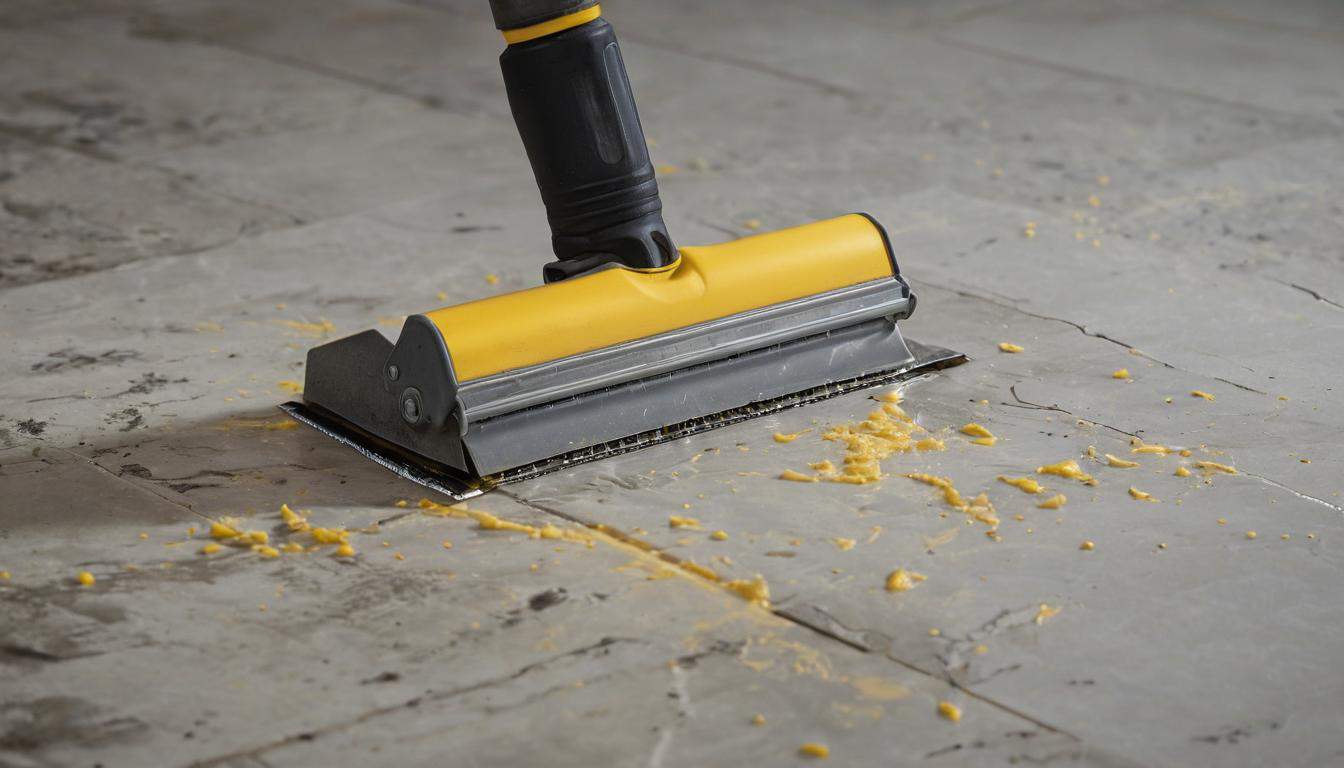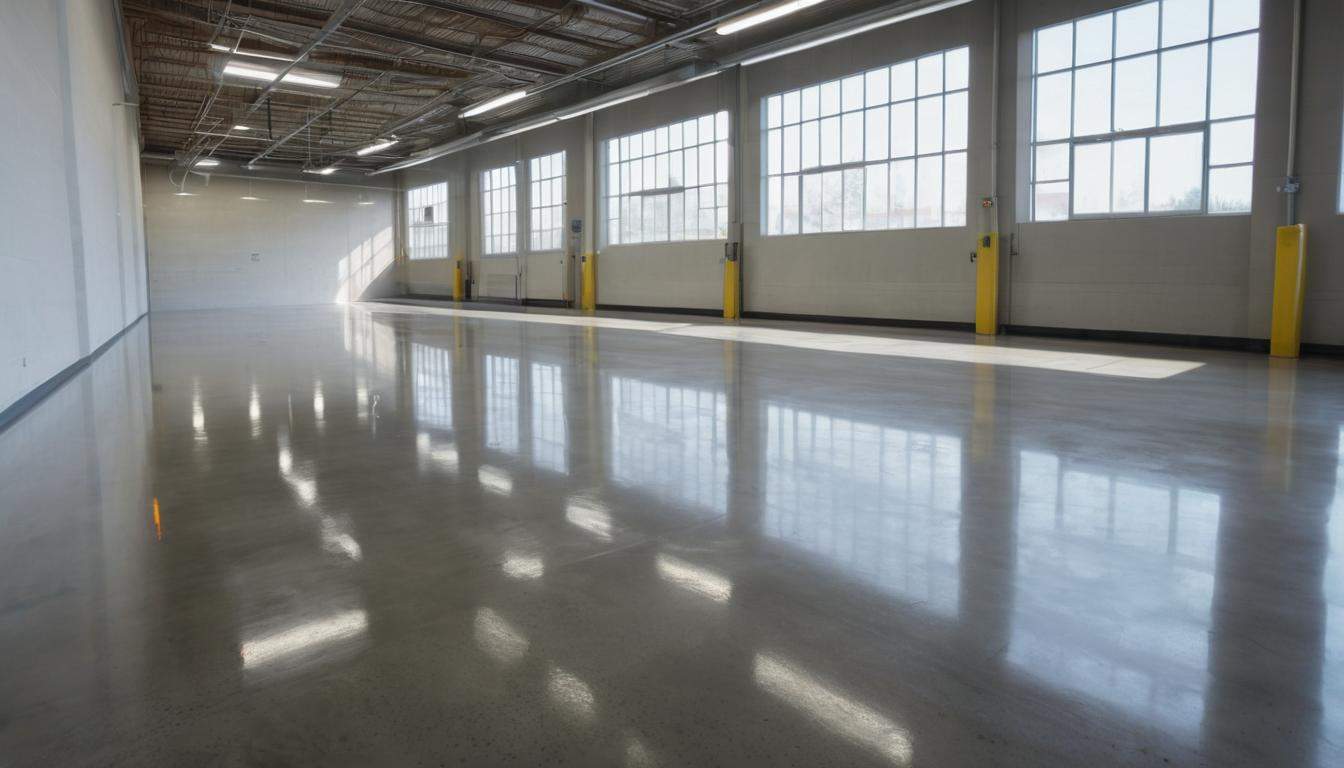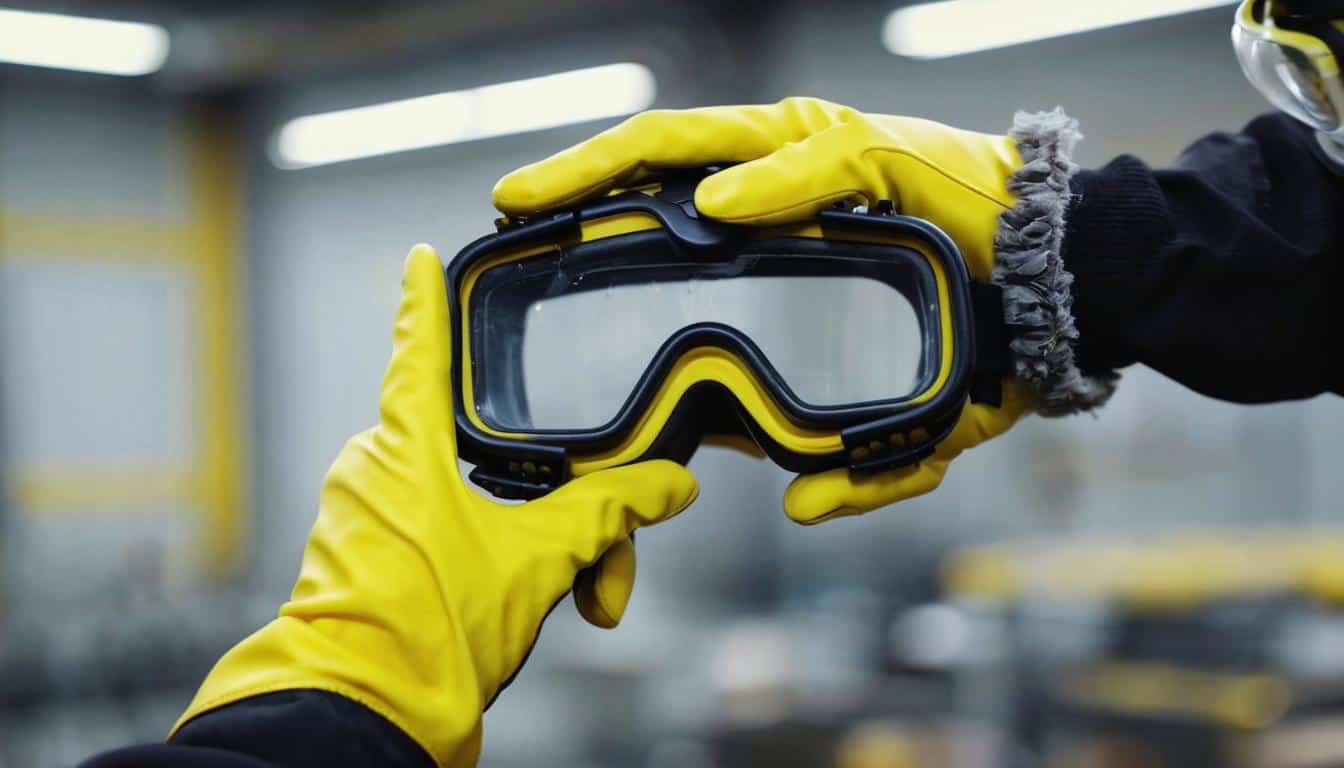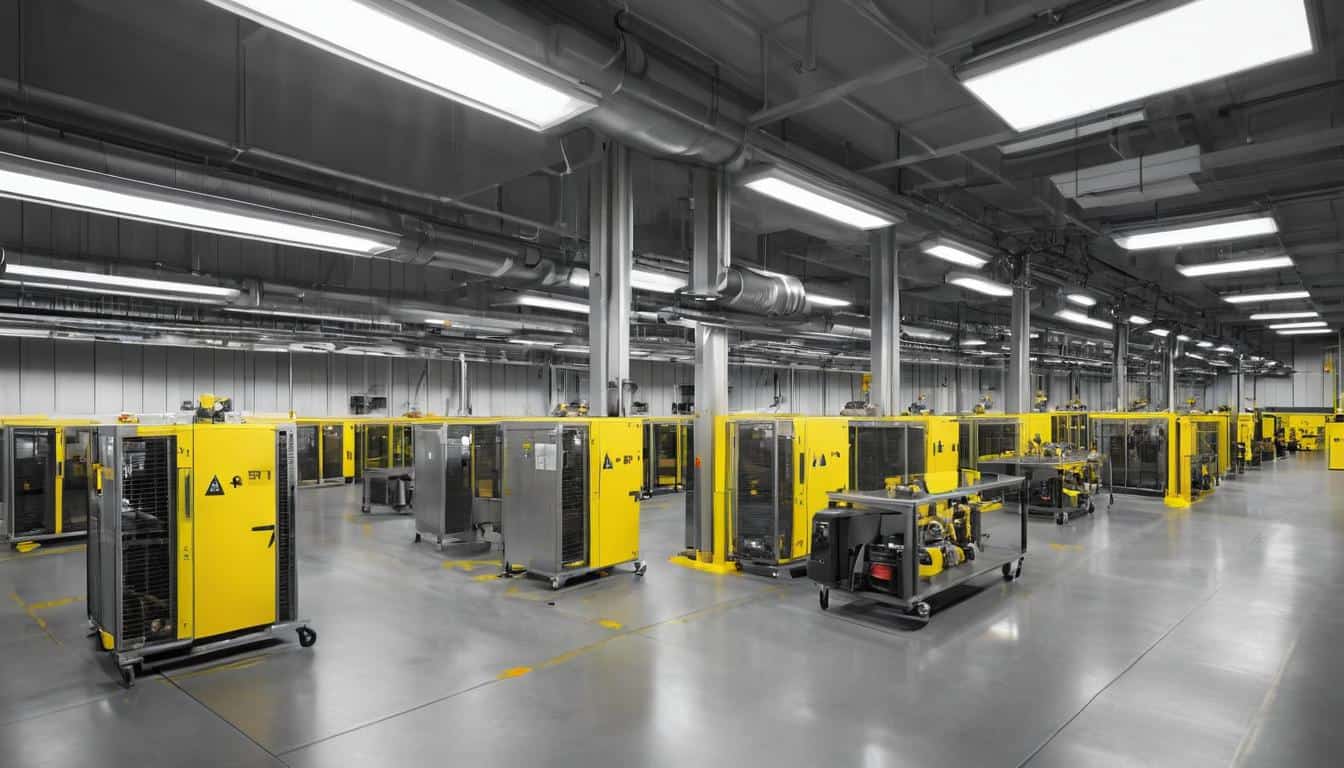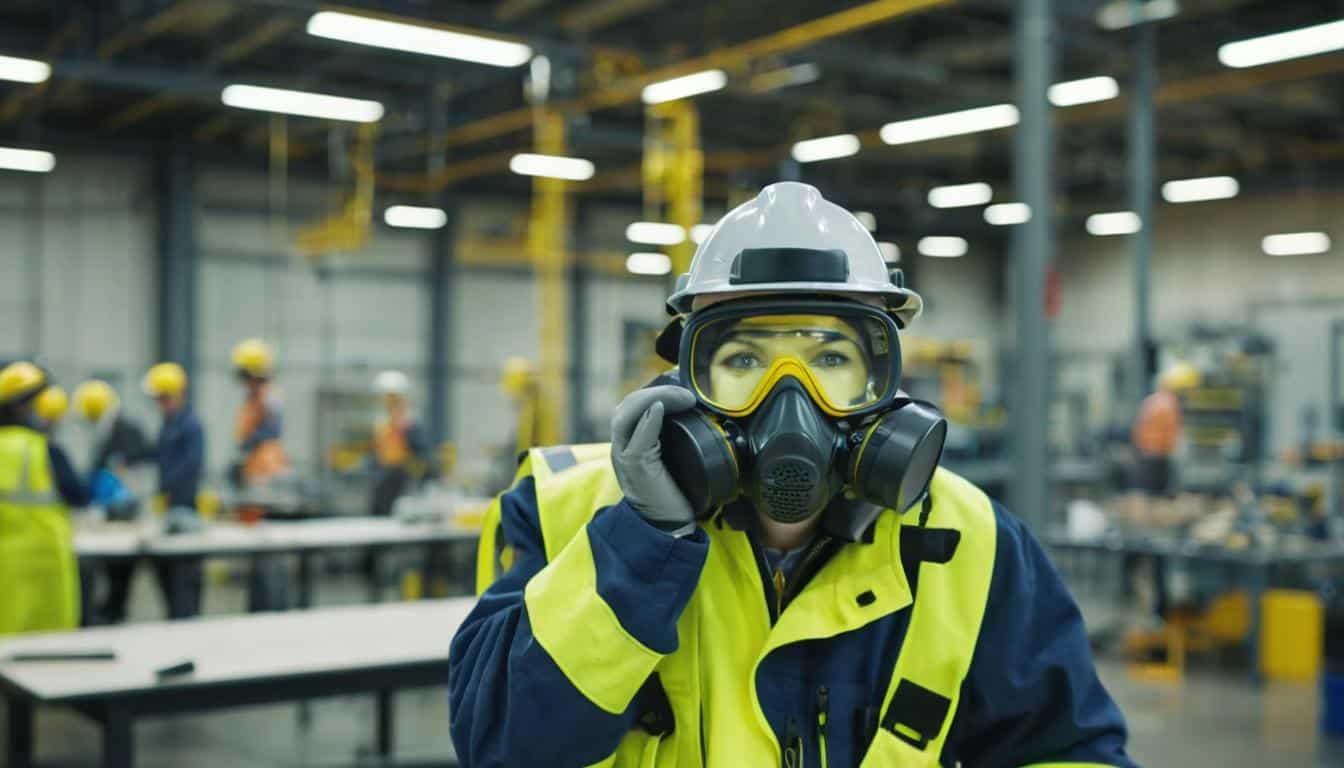Removing glued carpet from concrete can be quite the challenge, as I discovered when my friend shared a simpler method. With this newfound knowledge, what seemed daunting became manageable, and I only wish I had known sooner. The key was using tools like a utility knife or carpet cutter to slice the carpet into manageable strips, making the removal process much smoother. When faced with stubborn spots, I found unexpected solutions that did the trick. Now, let’s roll up that carpet and get it out of here!
The most effective method for removing glued carpet from concrete is to use a commercial adhesive remover specifically designed for stripping concrete. Apply the adhesive remover according to the manufacturer’s instructions and then scrape off the softened glue with a wide putty knife or floor scraper. Be sure to wear protective gloves and goggles when using any chemical solvents.
Initial steps: Removing the Carpet Padding
When it comes to removing a glued carpet from a concrete floor, starting with the carpet padding is a crucial first step. The padding is usually held in place by adhesive, and once you have cut and rolled the carpet as best you can, it’s time to turn your attention to getting rid of the residual padding.
First things first. Cutting and rolling will make it significantly easier to get this padding out of the way with as much efficiency as possible. Armed with a utility knife or carpet cutter, you want to begin cutting the carpet into manageable strips. These manageable strips will allow you to fully control and better handle the overall weight and size of the material you’re working with.
Once you’ve cut the carpet into strips, roll them up for easier removal. Rolling the pieces will help in efficient disposal while also allowing greater access to the underlying padding.
For example, imagine trying to carry a large, unwieldy roll of carpeting through doorways or around corners! Cutting and rolling makes this process much more manageable.
Pro Tip: Be sure to protect yourself by wearing gloves during this stage to avoid any potential injuries from sharp edges or tacks hidden within the material.
Once you have removed the carpet and rolled it up, you’ll find that the padding might leave behind remnants of adhesive on the concrete floor. This adhesive can be quite stubborn and difficult to remove, so using a mild detergent mixed with warm water is a good place to start. This solution will help to break down and dissolve any leftover adhesive.
Now, onto scrubbing and scraping. After removing most of the carpet, use a scrub brush or pad along with your cleaning solution to gently scrub away any remaining adhesive residue.
Think of it like removing dried gum from a surface with warm water – just like how water breaks down the stickiness, so does warm water mixed with detergent on adhesive.
To tackle more tenacious sections of adhesive that may be stubbornly clinging to the concrete, a floor scraper can be employed. This tool enables precise dislodging of these stubborn parts without damaging the concrete surface underneath.
Remember: When working with sharp tools like utility knives or floor scrapers, pay close attention to safety measures by wearing protective gloves and goggles.
By following these careful initial steps for removing glued carpet padding from concrete, you’re setting yourself up for success in preparing the surface for further cleaning and restoration.
Setting an effective groundwork through these steps ensures a smoother journey toward liberating your concrete floor from the remnants of its cozy past life as a comfort zone.
Main task: Removing the Carpet Glue
Now that you’ve cleared the carpet padding and are confronted with adhesive residue clinging to your concrete subfloor, it’s time to roll up your sleeves and dive into removing the carpet glue. This step demands patience and a few specific tools to do the job right. Let’s explore some effective methods to get rid of that stubborn adhesive and leave your concrete surface clean and ready for whatever flooring comes next.
One common method is to use a flooring scraper to pry up the glue from the concrete. Applying firm pressure and working at a 45-degree angle is essential to avoid damaging the concrete surface. When using a flooring scraper, patience and thoroughness are crucial to ensure all traces of the glue are removed.
Another effective technique is to utilize a commercial adhesive remover designed specifically for breaking down stubborn adhesives, making the removal process more manageable. Carefully following the manufacturer’s instructions when applying the adhesive remover is crucial for optimal results.
For instance, you may need to apply the adhesive remover evenly across the affected area and then let it sit for a specified amount of time before attempting to scrape off the softened glue. Remember, safety should always come first—be sure to wear protective gloves and goggles when working with any chemical substances.
If you’re hesitant about using chemical solutions, don’t worry; there are alternative methods too. Hot water can be used to soften the glue by pouring boiling water over a small section of the carpet glue and letting it soak for a few minutes. Then using a wide putty knife or floor scraper at a 45-degree angle can help lift off the softened glue. This method is particularly useful when preparing for installing laminate flooring or other new floor coverings by pouring boiling water over a small section of the carpet glue and letting it soak for a few minutes. Then using a wide putty knife or floor scraper at a 45-degree angle can help lift off the softened glue.
Similarly, dry ice can also aid in removing carpet glue from concrete. By placing small pieces of dry ice on top of the glue and letting it sit for a few minutes until the glue becomes brittle, you can then carefully scrape off the frozen glue.
It’s important to weigh your options and choose a removal method that aligns with your comfort level and environmental concerns while effectively removing every trace of carpet glue from your concrete floor. With patience and the right tools, you’ll have that glue-free subfloor shining in no time.
As you acquire mastery over these proven techniques for removing carpet glue, you gain insight into advanced methodologies that involve harnessing heat as a powerful tool in this intensive process. Let’s investigate these high-temperature tactics in detail.
Advanced techniques: Using Heat to Remove Carpet Glue
When it comes to removing stubborn carpet glue from concrete, employing heat can significantly simplify the removal process and reduce the overall labor involved. However, it’s crucial to exercise caution when using this method, as excessive heat could potentially damage the concrete surface or pose a fire hazard.
One effective tool for this task is a heat gun. Adhering to the recommended temperature range of 200°F to 400°F is crucial for optimal results, as a lower setting might not effectively soften the adhesive, while a higher one could risk damaging the concrete. Additionally, wearing heat-resistant gloves, protective eyewear, and a respirator mask is essential for safety when handling a heat gun.
If a heat gun is not available, an alternative method entails using a regular iron set to a low steam setting. This can also aid in softening the adhesive, making it easier to scrape off. To achieve effective results with this approach, it’s vital to work in small sections – heating one area at a time and promptly removing the softened glue before moving on to the next section.
It’s worth emphasizing the need for extreme care when employing these heat-based techniques. Safety should always be prioritized, especially when working with tools that generate high temperatures to avoid accidental damage or injury. These precautions are similar to those needed when removing parquet flooring, another challenging floor removal task.
Employing heat as a method of loosening carpet glue offers significant benefits in facilitating easier removal, but it’s essential to handle this technique with great care due to the potential risks associated with heat application.
Alternative methods: Dislodging Carpet Glue with Tools
When it comes to removing glued carpet from concrete, having the right tools can make all the difference. If you’re dealing with a larger surface area or stubborn glue, consider using a buffer machine with a glue scraper attachment. This powerful tool is designed to efficiently grind away adhesive residue without causing damage to the underlying surface.
Buffer Machine with Glue Scraper Attachment
The buffer machine equipped with a glue scraper attachment is a handy tool that aids in mechanical removal of the adhesive. The rotating motion of the buffer machine allows the scraper attachment to effectively loosen and lift the carpet glue off the concrete surface. This method not only expedites the process but also ensures that larger surface areas can be covered efficiently.
4″ Razor Blade Floor Scraper
In cases where a buffer machine may not be suitable, or for targeted removal of stubborn glue patches, a 4″ razor blade floor scraper is an excellent alternative. This handheld tool provides precision and control, allowing you to target specific areas of adhesive buildup. Additionally, it’s particularly useful for navigating corners and edges where larger equipment may not reach effectively.
When using these tools, it’s important to exercise caution and precision to avoid damaging the concrete surface.
In summary, utilizing specialized tools like buffer machines with glue scraper attachments and 4″ razor blade floor scrapers offers an efficient and effective way to dislodge carpet glue from concrete surfaces. These tools are essential for navigating larger surface areas and targeting stubborn glue patches with precision.
Post removal: Tackling Sticky Residue on Concrete
Congratulations! You’ve successfully removed the carpet and adhesive from the concrete surface. Now it’s time to give your floor some tender loving care to ensure a smooth and clean finish. Even after physically removing the carpet, there may still be some sticky residue left behind, which can be quite stubborn and detract from the floor’s aesthetic appeal.
First things first: Before proceeding with any cleaning or scrubbing, it’s essential to allow the area to air out thoroughly. The removal process may have released some odors or fumes, and adequate ventilation is crucial. Open windows and use fans to circulate air, creating a safer environment for your next steps.
Once the area is adequately ventilated, it’s time to tackle the residual stickiness. Concrete cleaners are an effective solution and readily available in the market. Alternatively, you can create your own cleaning solution by mixing water with white vinegar – a natural and safe option for removing sticky residues.
When dealing with stubborn adhesive remnants, consider using a stiff-bristled brush or scrubbing pad to agitate and dislodge the residue effectively. By applying vigorous but controlled motion, you can target specific areas where the sticky residue remains.
Imagine this cleaning process as coaxing away impurities from a surface – gentle yet persistent agitation can yield surprising results.
After scrubbing away the sticky residue, rinse the cleaned area with fresh clean water. Thorough rinsing helps ensure that all traces of cleaner or vinegar are removed from the surface, preventing any potential reactivity with new applied materials later on.
Quick Tip: Allow the area to dry entirely before proceeding with any subsequent treatments. With the concrete floor now free from both carpet and adhesive residue, it’s ready for further treatment or refinishing according to your preference. At this point, you might want to explore various flooring options to decide what best suits your space and style.
Safety measures: Precautions When Using DIY Methods
When removing glued carpet from concrete, prioritizing safety is crucial. Despite seeming like a simple DIY task, there are potential hazards that require proper precautions. Here are some essential safety measures you need to follow to protect yourself and your surroundings during the removal process.
Protective Gear
Protective gloves and goggles are essential when working with adhesive removers or any cleaning solutions. The chemicals in these products can be harmful if they come into contact with your skin or eyes. Therefore, wearing protective gloves safeguards your hands against irritants, while wearing goggles protects your eyes from accidental splashes or fumes. These safety measures help prevent any potential injuries or discomfort during the cleaning process.
Ventilation
Proper ventilation is key when working with chemicals or using methods that produce fumes, such as using adhesive removers or heat guns. Adequate ventilation ensures that any fumes or chemical vapors disperse quickly, reducing the risk of inhaling harmful substances. Opening windows and using fans can help maintain a healthy airflow, safeguarding your respiratory system from exposure to potentially harmful chemicals.
Following Safety Instructions
Whether you’re using heat to soften the glue, applying adhesive removers, or utilizing any tools for the removal process, it’s critical to strictly adhere to the safety instructions for each method. For instance, when using a heat gun, it’s important to maintain a safe distance from the surface to avoid damaging the concrete and minimize the risk of fire hazards. Similarly, when choosing an adhesive remover, carefully read and follow the manufacturer’s specific safety guidelines and application instructions.
It’s vital to recognize that taking the necessary safety measures not only protects you from potential harm but also ensures that the removal process is carried out effectively and without any unforeseen accidents. By being mindful of these precautions, you create a safer environment for yourself and those around you while minimizing potential risks and promoting a successful DIY carpet removal project.
Ensuring your safety and well-being should always be the top priority when undertaking any home improvement task, including removing glued carpet from concrete. It’s crucial to remember that by being proactive about safety measures, you’re not only protecting yourself but also fostering a secure and comfortable work environment. This principle applies to all flooring projects, whether you’re removing carpet or sanding hardwood floors.
Prioritizing safety throughout the carpet removal process will not only protect you but also ensure a smoother and more successful project. Always remember that staying safe is equally as important as achieving the desired outcome.

